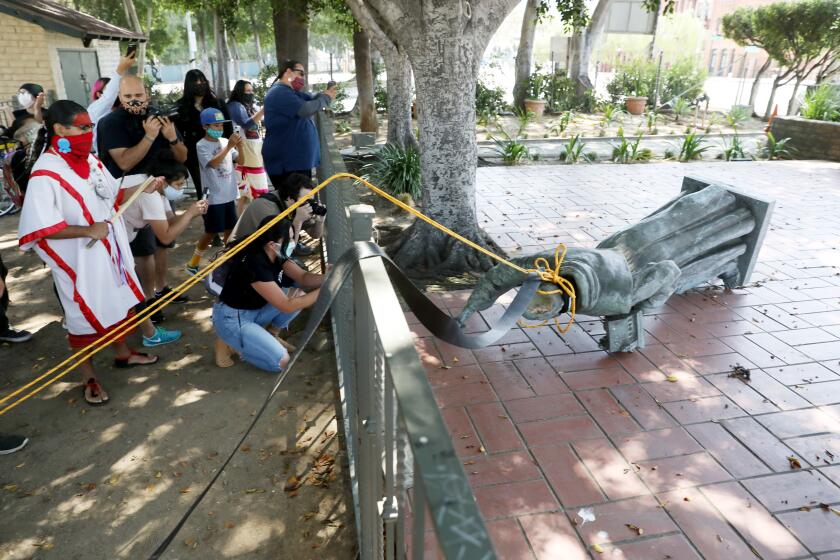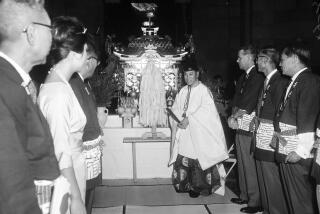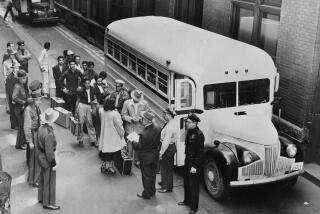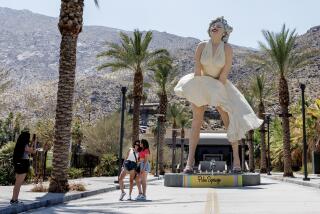After protest, Junipero Serra statue still standing in Ventura
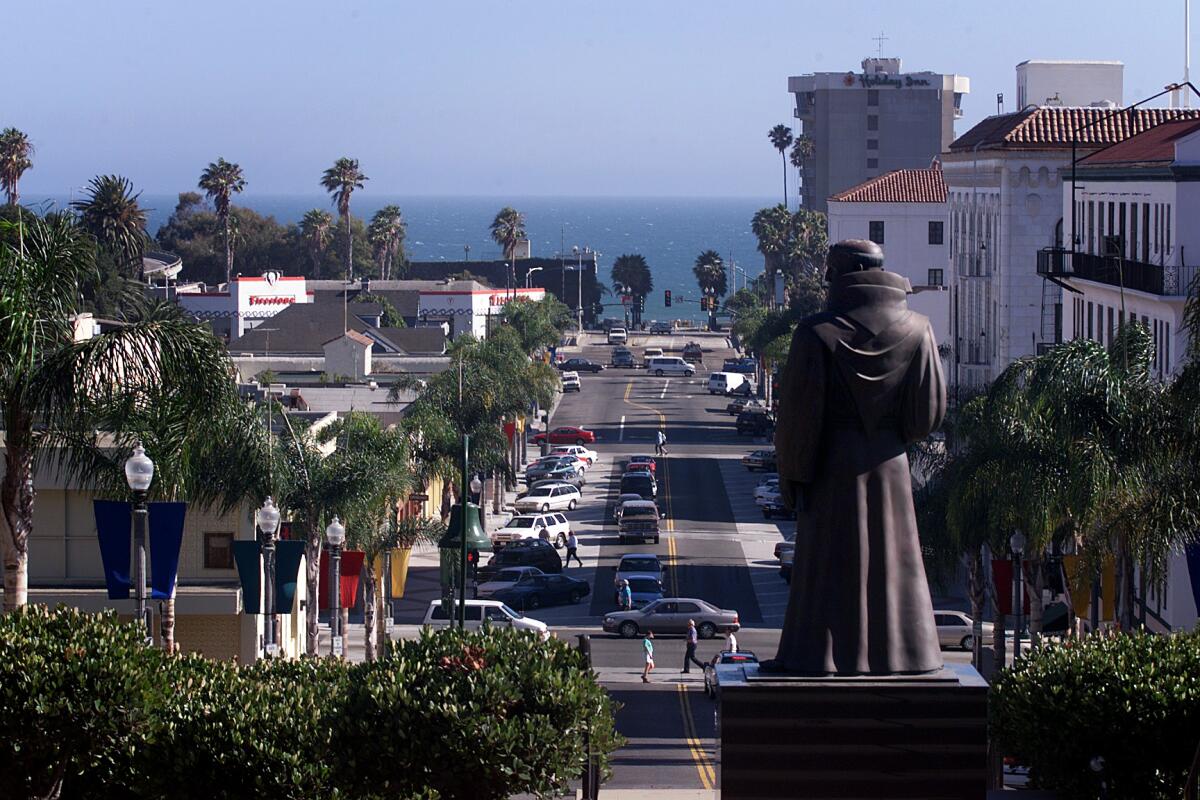
- Share via
For a time Saturday, it looked as if a statue of Junipero Serra outside City Hall in downtown Ventura might join the growing ranks of toppled figures.
Two days earlier, a joint statement from local political, indigenous and Catholic leaders pledged to remove the monument, originally commissioned in the 1930s but replaced in 1989.
“The time has come for the statue to be taken down and moved to a more appropriate nonpublic location,” read the statement, issued by Ventura Mayor Matt LaVere; Chumash elder Julie Tumamait Stenslie, tribal chair of the Barbareño/Ventureño Band of Mission Indians; and Father Tom Elewaut, pastor of the San Buenaventura mission, the ninth and final mission founded by Serra.
By the time the statement — which called for a collaborative process, including community discussion — was released, a protest had already been scheduled and a petition calling for the statue’s removal had received more than 5,000 signatures.
When Saturday came, protesters unfurled a banner in front of the statue.
“Father Genocide,” it read.
Counter-demonstrators — many bearing American flags and who appeared to be white and not wearing face masks — formed a circle around the statue of the Spanish missionary, blocking protesters from reaching it.
This group carried its own signs. “I <3 Padre Serra,” read one; “Serra: Defender of the Chumash” read another.
After the dueling groups departed, the statue remained standing.
A recently canonized saint in the Roman Catholic Church, Serra is considered the founder of the mission system that cemented the religion in what is now California. The missions often violently forced indigenous people to assimilate to Serra’s foreign culture and exposed them to foreign diseases. Hundreds of thousands of indigenous people are estimated to have died.
“This is our history that we’re talking about here. … We are going to be a part of this,” Tumamait Stenslie said during the protest.
Junipero Serra was declared a saint in 2015. But his role in California’s colonization via the mission system makes him a target for statue toppling.
Long controversial, statues of Serra are receiving heightened attention since protests against police violence and racism have gained more traction in the country following the death of George Floyd by Minneapolis police.
The toppling of statues dedicated to people considered racist has emerged as a viral mainstay of the worldwide anti-racist movement. Statues of Confederates have fallen in the South. One depicting a slave trader was tossed into a river in Bristol, England. Other casts of Serra have been torn down, too, including one pulled off a pedestal Saturday in downtown Los Angeles.
At the Ventura demonstration, the Chumash leader called for a more formal process in the city.
“I do condone the anger. What I do not condone is the violence,” Tumamait Stenslie said. “This would not be our way of doing this. We have talked, and we have met with the city mayor and Father Tom. You may be contrary to me, but these people are not monsters,” Tumamait Stenslie said.
When he spoke, Elewaut acknowledged that 3,600 indigenous people are buried at the Ventura mission he oversees.
“We will do what we can to have some recognition for the burial grounds,” Elewaut said. He shared doubts that the mission would be able to name each indigenous person buried in the mass grave, as a statement read earlier on behalf of Alan Salazar of the Fernandeño Tataviam Band of Mission Indians called on the Catholic church to do.
Police, who estimated that there were 200 people at the protest, made no arrests even as tensions simmered between those for and against the statue’s removal, according to the Ventura County Star.
Ventura city spokeswoman Heather Sumagaysay said the city is making plans to host community discussions regarding the Serra statue. There is no timeline for its removal, she said.
“It is our priority to be receptive to public concerns and provide an environment where all voices are heard and respected. A historic decision such as this will involve the voices of the Chumash tribe, the City Council and the residents of Ventura,” Sumagaysay said in an emailed statement.
“The city remains committed to collaborating with the community to determine next steps. We will inform the public of opportunities to participate and offer input at a future meeting.”
More to Read
Sign up for Essential California
The most important California stories and recommendations in your inbox every morning.
You may occasionally receive promotional content from the Los Angeles Times.
